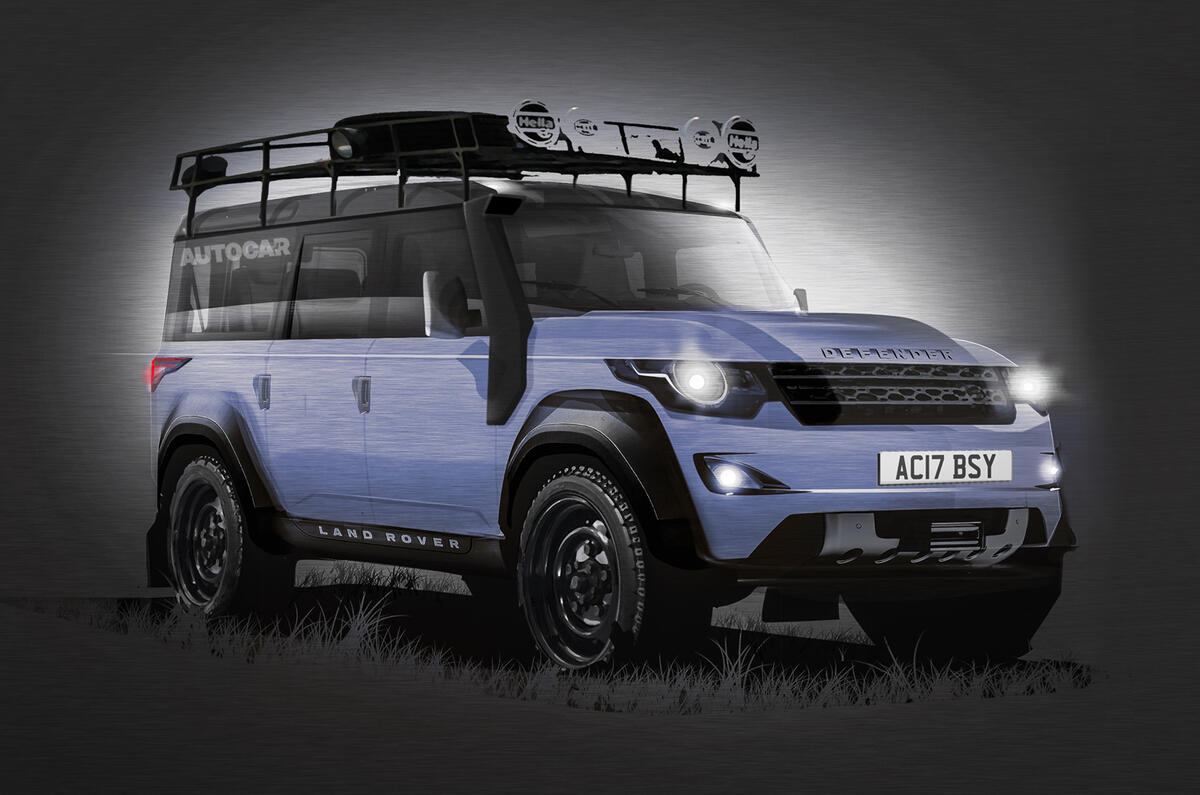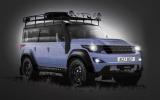The new Defender will be the most capable Land Rover ever built, according to Phil Popham, Jaguar Land Rover’s group marketing director.
Speaking at the recent Paris show, Popham said the long-awaited new model would have the biggest “breadth of capability” of any model to wear the Land Rover badge.
The claim emphasises the importance that JLR is putting on replacing the iconic Defender, which has its roots in the 65-year-old original Land Rover model.
JLR has, so far, succeeded in keeping the wraps on the likely styling and the engineering make-up of the new Defender. However, we do know that the styling of the new car has already been signed off.
The styling theme for the new model is thought to have been given the green light during the summer. This means that the new vehicle is likely to be seen as a concept in 2016, and to appear in production guise around 2018.
However, a sneak preview in the form of a concept car is currently being discussed. Potential debuts for a concept are next March at the Geneva show, at the New York show in the spring or at the Frankfurt show next September.
There’s also no news about the structure underpinning the new Defender, but it looks likely to be a version of the company’s aluminium monocoque with the addition of a substantial aluminium superstructure in order to make the architecture as stiff and rugged as possible.
This technique – mixing a monocoque passenger cell and a separate steel chassis – was used under the Discovery to great success but resulted in a vehicle that weighed more than two tonnes. Repeating the exercise in aluminium should provide even greater structural rigidity than the Disco 4, with much reduced all-up weight.
With the new Defender being pitched as “premium durability”, it will come with the new Ingenium four-cylinder turbocharged diesel and petrol engines as well as V6 engines, Autocar understands. They will be connected to eight and nine-speed automatic gearboxes as standard, but there is no definitive news on whether there will be the option of a manual transmission.
JLR is determined that the new Defender will be able to thrive in the world’s harshest conditions, to the extent that it will be able to ‘plug into’ existing component networks by using the same wheel and tyres sizes as Toyota’s Land Cruiser and Hilux.
Autocar has been unable to substantiate rumours that the new Defender also uses the same bolt circle diameter to make wheel replacement easier in places such as central Africa.
The premium durability theme for the new Defender extends to the interior. Land Rover’s design team is aiming for a cabin that is distinctly more upmarket and better made than that of the Land Cruiser, for example.
This, combined with the intention of world-class mechanical durability and off-road ability, should give the Defender a decisive difference in this market niche. The extra luxury and comfort should also make it more appealing to affluent urban buyers.
Q&A with Phil Popham, JLR marketing director
What’s behind the recent massive increase in Land Rover sales?
Product has been the driver. Six years ago, when the recession hit, we made the decision to cut costs but keep investing in new products such as the new Range Rover and Range Rover Sport. We’ve gone from an annual cash outflow of around £1 billion to a similar amount as a cash inflow.
We’ve also seen a very high proportion of conquest sales with the two new Range Rovers, so we are pulling in customers who are new to the brand. There’s also a four to six-month waiting list for the Range Rover and Range Rover Sport, which shows the strength of demand.
In the future, we will have great manufacturing flexibility, with the two Range Rovers and the [next] Discovery being built on the same production line. Product demand drives our manufacturing strategy.
Why are profit margins so high?
We sell a very rich mix of vehicles. Buyers are keen to purchase a lot of the options and accessories on offer. We’ve also invested heavily in developing markets such as Russia and China. JLR sold 6000 vehicles in China in 2008. Last year, we sold 100,000 vehicles.
We are also seeing strong residuals for our models and that’s reflected in monthly payments. Even at the premium end of the market, buyers want to spend less running their vehicles. Total cost of ownership is a big issue.
Get the latest car news, reviews and galleries from Autocar direct to your inbox every week. Enter your email address below:







Join the debate
Add your comment
A HEAVYLUMINUM CHASSIS AND MONOCOQUE AND SUPERSTRUCTURE?
"There’s also a four to six-month waiting list for the Range Rover and Range Rover Sport, which shows the strength of demand." No. It shows poor production planning. Waiting lists are nothing to boast about.
Stop guessing
Jon_R32 wrote:I really hate
I wouldn't say the magazine rendering is damaging, it merely lowers expectations, so when the underwhelming final version is revealed, everyone is 'amazed' by it. The XE looks identical to the XF. Just a bit smaller.
Moving upmarket
Whatever, I'm pleased that the value of my present, honest and very worthy, Defender will no doubt increase.